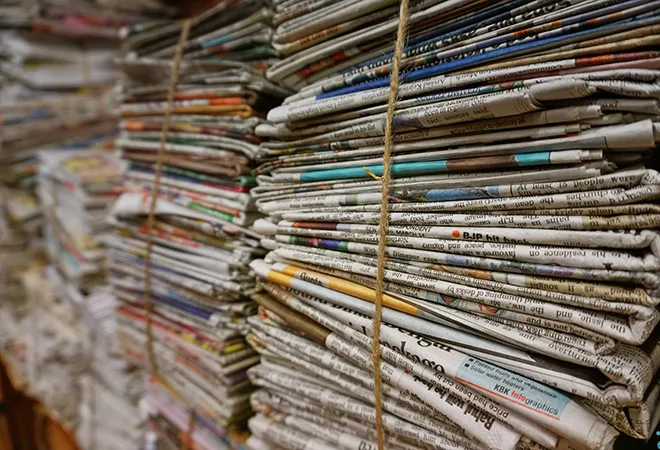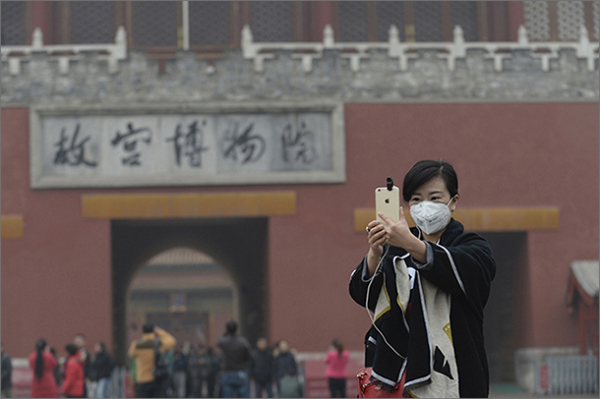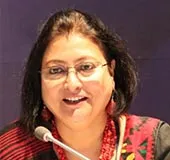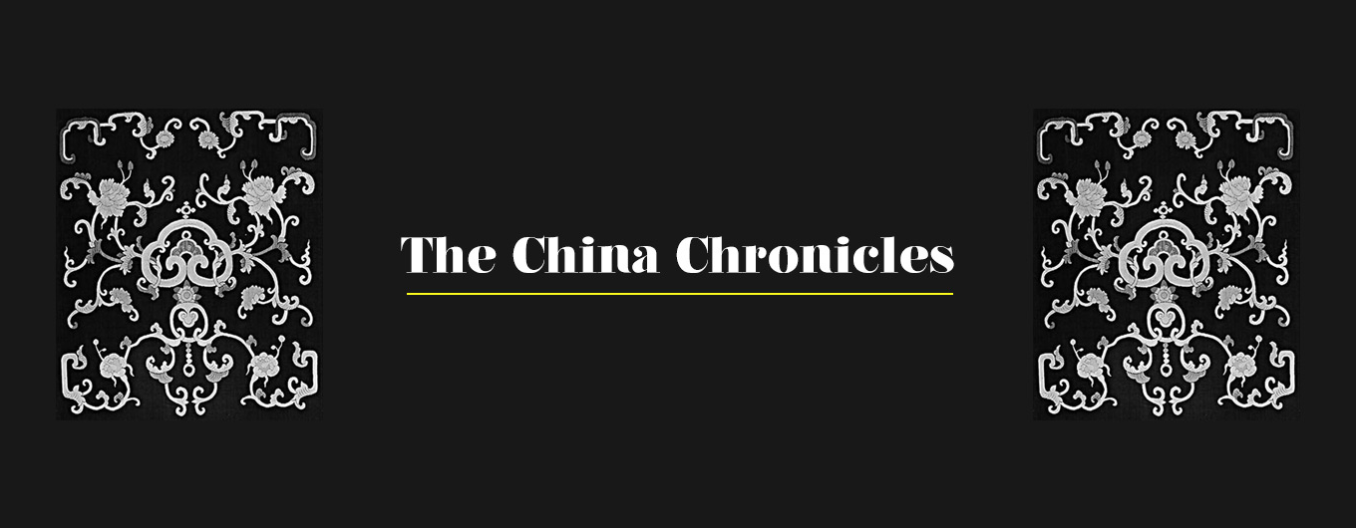 This is the ninth part in the series
This is the ninth part in the series The China Chronicles
.
Read the first eight parts here.
N. Haksar, Principal Secretary to Prime Minister Indira Gandhi from 1967 to 1973, once remarked, "It is true that we Indians have looked at China through western eyes.. e have inherited stereotyped images of China.. the same is true of the Chinese looking at India as well. The time has come when it is imperative for us to try and understand each other directly." Observer Research Foundation's project on understanding China delves into this matter — to find out how the two countries directly perceive each other. A recent publication titled Indian Media's Perception of China: Analysis of Editorials is part of this study, making an attempt to present how the national Indian print media has looked at China during the years 2012-14.
The national newspapers chosen from India based on circulation are: The Times of India, The Hindu, The Indian Express, The Economic Times and The Financial Express. In each of the newspapers, the authors have looked at the editorial pieces relating to China — as these articles are indicative of a newspaper's authoritative perception. There is no doubt that the print media in India, despite the strong presence of the electronic media, enjoys enormous reach and has great impact on the minds of its readers enriching their information, shaping their perceptions and providing them with choices. Hence, the media has a role and a responsibility in creating proper understanding between neighbouring countries. Pranab Mukherjee, India's current President, while serving as External Affairs Minister, highlighted this point when, addressing the media, he said, "In many ways, the media is the torchbearer of better people-to-people contacts.. ne sentence from any of you has the potential to reach millions. It can correct a wrong; it can create an image; it can plant a seed of understanding."
The three-year period was selected in the report because it saw leadership changes in both countries, and these leaders — Xi Jinping and Narendra Modi — appear similarly assertive in strengthening the bilateral relationship. They are also making efforts to resolve border and trade disputes between the two countries. This three-year period also marked the beginning of China's One Belt One Road (OBOR) initiative on the one hand and on the other, the transformation of India's earlier Look East policy into the Act East policy.
This report argues against conventional wisdom about the Indian media's portrayal of China. The total number of editorials published by these five newspapers on China-related issues available on their web editions during these three years stands at 167 of which 30 were published in 2012 and 41 in 2013. In 2014, there was a sharp rise in the number of editorials, as the total number came to 96. The selected section of the Indian print media showed a consistent interest in China to the extent that for the entire period covered by this study it devoted slightly more than 15 percent of editorial pieces to China. Further, editorial attention is increasing.
While analysing editorials both in quantitative and qualitative ways, we find there is neither consistent antipathy nor over-concern with a single issue, namely, the border dispute.
Indeed, the print media's perception of China is still dominantly negative, yet there is an increasing tendency to be more discerning about issues and more forthright in pointing out areas where cooperation is possible and achievable.

We find that China's rise, by and large, has been a matter of serious concern for the Indian media in 2012. In 2013, China was seen very much as a threat: the tension spurred by border incursions was probably why China was not portrayed in any better light. However, in 2014 a shift with editorials focusing more on economic engagement and diplomatic relations between these two countries. The report shows that The Times of India was particularly critical about China as a rising power drawing attention to its geopolitical implications for India while The Economic Times proposed a more rational solution to the border problem.
It is interesting to note that Debasish Roy Chowdhury, in the China Report in 2015 while analysing the news reports on China (not editorials) of two major national English dailies of India, namely, The Times of India and The Hindustan Times, for the first six months of 2012 found "shrill jingoism" in reporting China. He says, "If one went only by the Indian media's depiction of China, one could easily be forgiven for thinking war is imminent." However, a perusal of the editorials of five national English language dailies including one of the two that Roy Chowdhury also studied, for a longer period of three years including 2012, does not convey any such impression. Rather, the media is increasingly suggesting that India and China can positively and productively engage each other while at the same time resolve their border dispute satisfactorily soon. Mutual trust and cooperation would have a positive multiplier effect on the Sino-Indian relationship. The editorials studied here suggest that the media on the whole is both mature and responsible in its attitude to China. Far from crying wolf where there is none, the media does not hesitate to point out both the need and the opportunities for cooperation.
The views expressed above belong to the author(s). ORF research and analyses now available on Telegram! Click here to access our curated content — blogs, longforms and interviews.



 This is the ninth part in the series The China Chronicles.
Read the first eight parts
This is the ninth part in the series The China Chronicles.
Read the first eight parts 
 PREV
PREV




